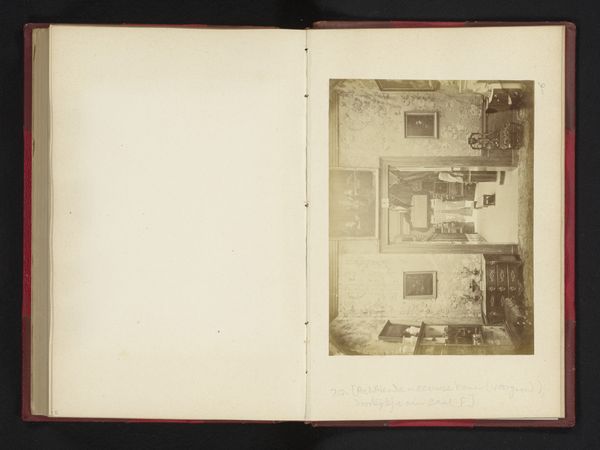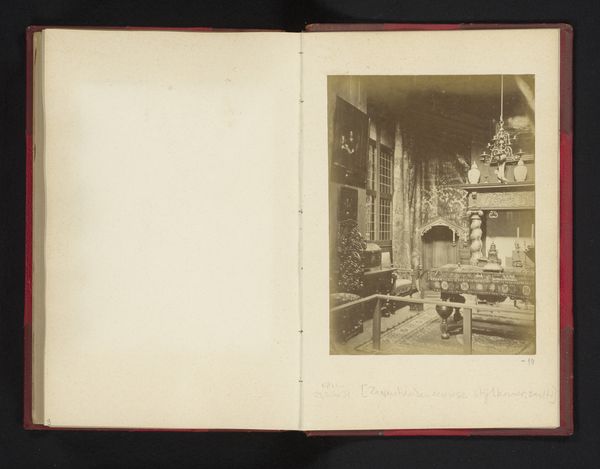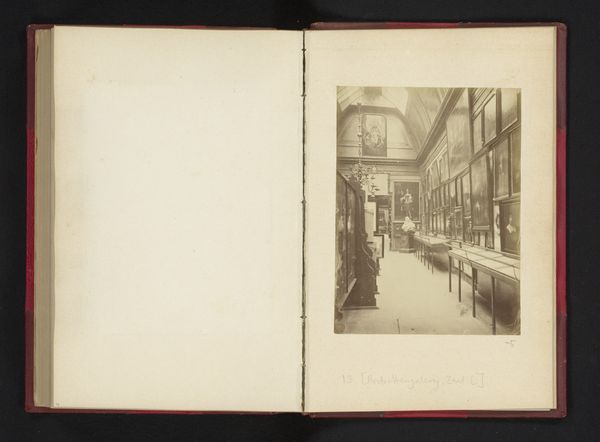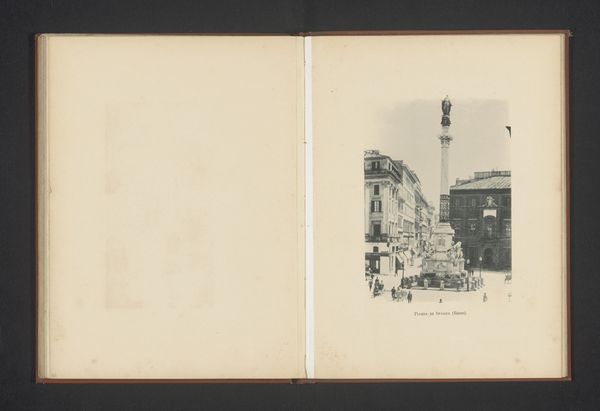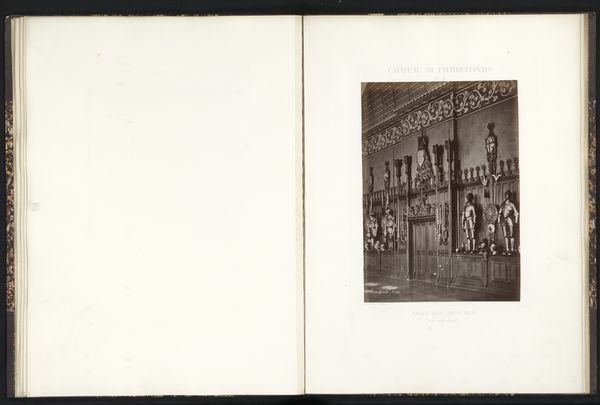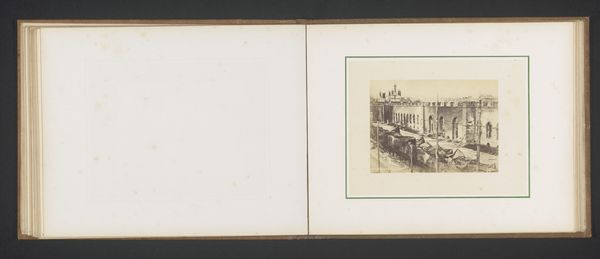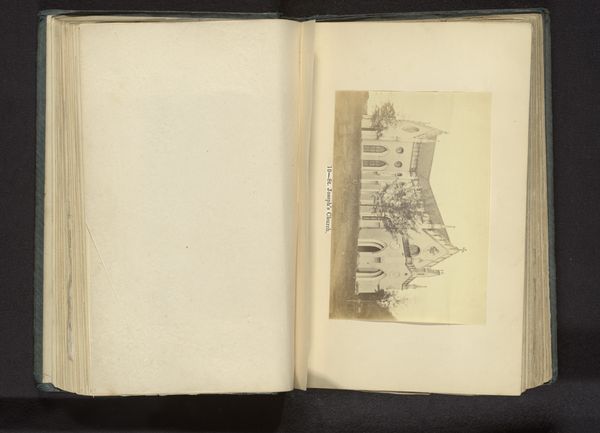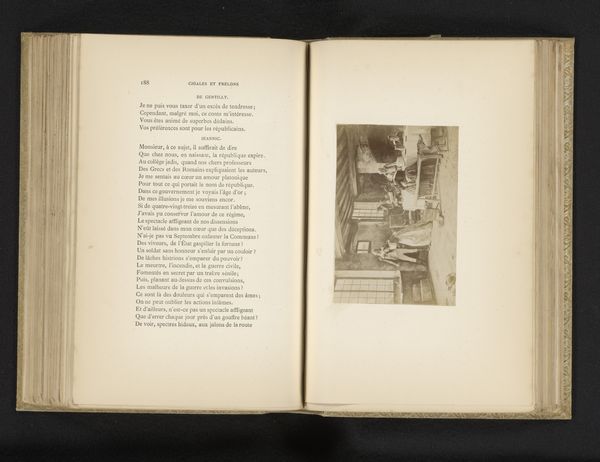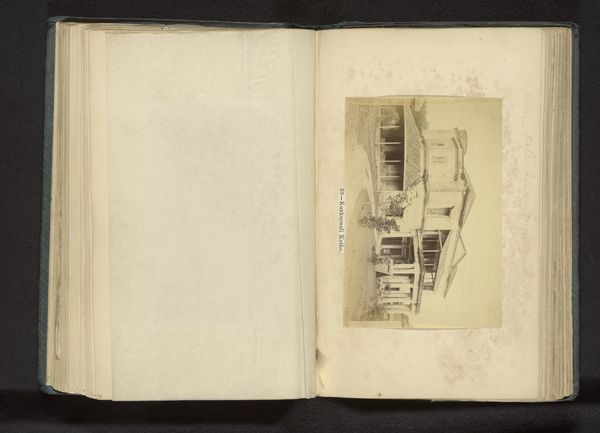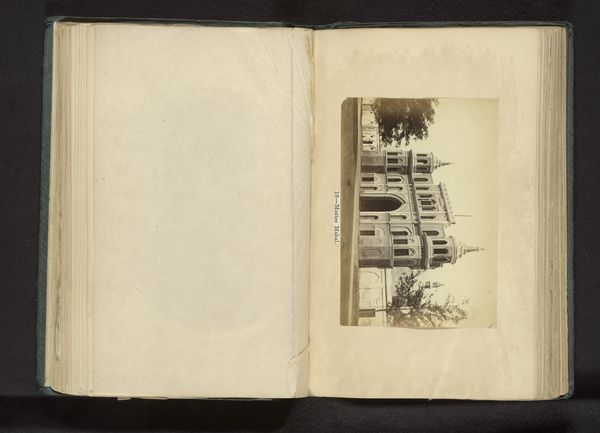
Ingang van zaal C op de Historische Tentoonstelling van Amsterdam in 1876 1876
0:00
0:00
print, photography, albumen-print
# print
#
impressionism
#
landscape
#
photography
#
academic-art
#
albumen-print
Dimensions: height 162 mm, width 123 mm
Copyright: Rijks Museum: Open Domain
Curator: Pieter Oosterhuis captured this view of the "Entrance of Hall C at the Historical Exhibition of Amsterdam in 1876" in an albumen print. Editor: My first impression is that it looks like a stage set—a little grand, a little artificial. The symmetry and the placement of the sculptures feel carefully orchestrated for effect, rather than naturally occurring. Curator: Precisely. These historical exhibitions were meticulously curated to project a certain image of national identity. Consider the layers here. We see a photograph, capturing an exhibition, intended to showcase history. Each layer adds to the narrative construction. Editor: It's fascinating how the photographer frames the space. He uses the architecture, statues and the paintings themselves to create depth, pulling our eye down this seemingly endless hall. It almost becomes a symbolic corridor through time. Curator: It really does function as a constructed memory lane. Notice, too, the careful placement of busts and figures, almost as guardians of cultural memory. They lend an air of importance, an almost performative reverence. Editor: Right. And the light seems so consciously managed—like a spotlight illuminating specific aspects. It draws your focus but also leaves things in shadow, hinting at hidden histories, things we don’t have access to anymore. Curator: Or perhaps, things the organizers wanted to selectively illuminate. Remember, historical narratives are always subjective, reflecting the concerns and priorities of those who create them. Photography, while seemingly objective, here participates in that selective construction of the past. Editor: It gives you the odd sense of being both present and absent at once, standing in that exhibition, but separated by so many filters. It makes you question what exactly you are looking at and what you think you know. Curator: Yes, it encourages reflection not only on what we see in the image, but on the very act of observing history. And that awareness, that layered perspective, feels particularly potent today. Editor: Absolutely. Thinking about the choices made during that time really does help to contextualize how we remember history even now.
Comments
No comments
Be the first to comment and join the conversation on the ultimate creative platform.
